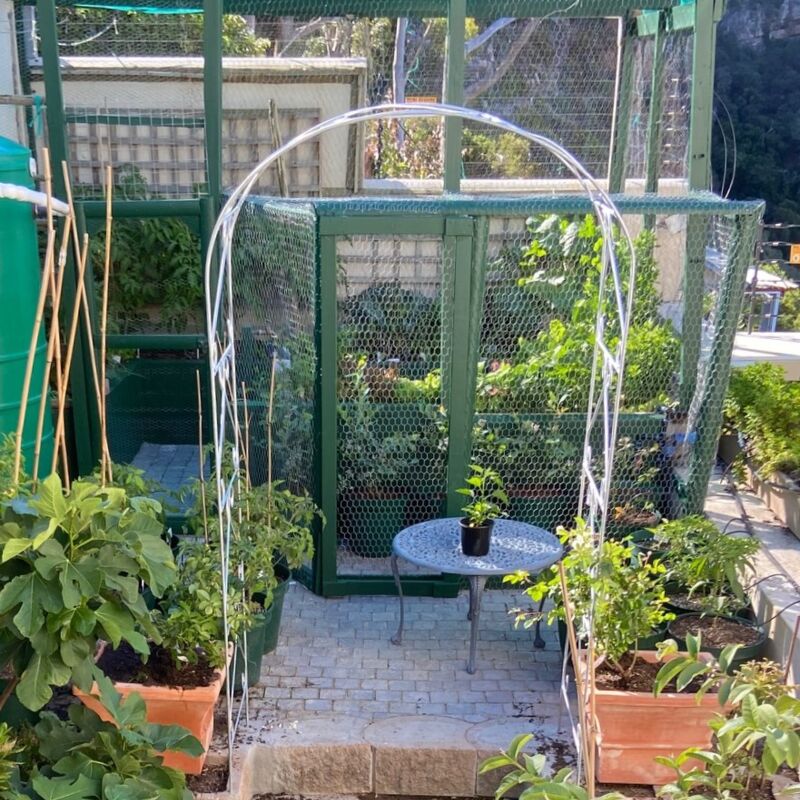2021

My aim for 2021 was to work towards understanding the interactions in the biosphere encompassing living organisms: plants, animals and bacteria, the atmosphere, water resources and the relationships of living organisms with one another, including the variety of living organisms that inhabit my garden (its biodiversity)
The 2021 garden was designed to have fresh produce all season long using succession planning, intensive gardening in permanent raised beds and containers using high-density mixed planting.
Using these methods, I planned to take advantage of the entire bed surface without leaving space between rows of plants resulting in more yield without requiring more garden space.
I also planned to intersperse crops with different root depths, plant height and growth rates, combined with succession planting and quick replanting any gaps left after harvesting lets you use every garden area throughout the year.
A critical development in the year was constructing a dedicated container area next to the enclosed raised bed area.
Succession planning
Succession planning is the practice of:
- Seeding crops in seven to ten-day intervals for quick growing crops
- After harvesting the first determinate crops (crops that produce all their fruit or edible parts at once, e.g., determinate tomato or beets), plant a new crop – either the same or a different crop.
For quick-growing crops like peas, lettuce and radishes, it is best to calculate the amount you use in a week and plan your seeding schedule accordingly.
Succession planting is not necessary for indeterminate plants and herbs.
Indeterminate plants like tomatoes, cucumbers and peppers continue to produce fruit off the same plant and can be harvested multiple times, as can herbs.
Intensive gardening.
Intensive gardening requires abandoning the traditional growing plants in rows to grow more food in less space.
The big idea for a small garden
The aim is to enjoy all of the benefits of sustainable living on a farm or a small garden by producing the vegetables needed for a nutritious, healthy life without the necessity of purchasing vast tracts of land to grow vegetables and raise animals.
In an urban area, the fish, meat or nuts amd other proteins required can readily be bought, and the vegetables needed for a family during the different growing seasons can be grown in a small home garden.